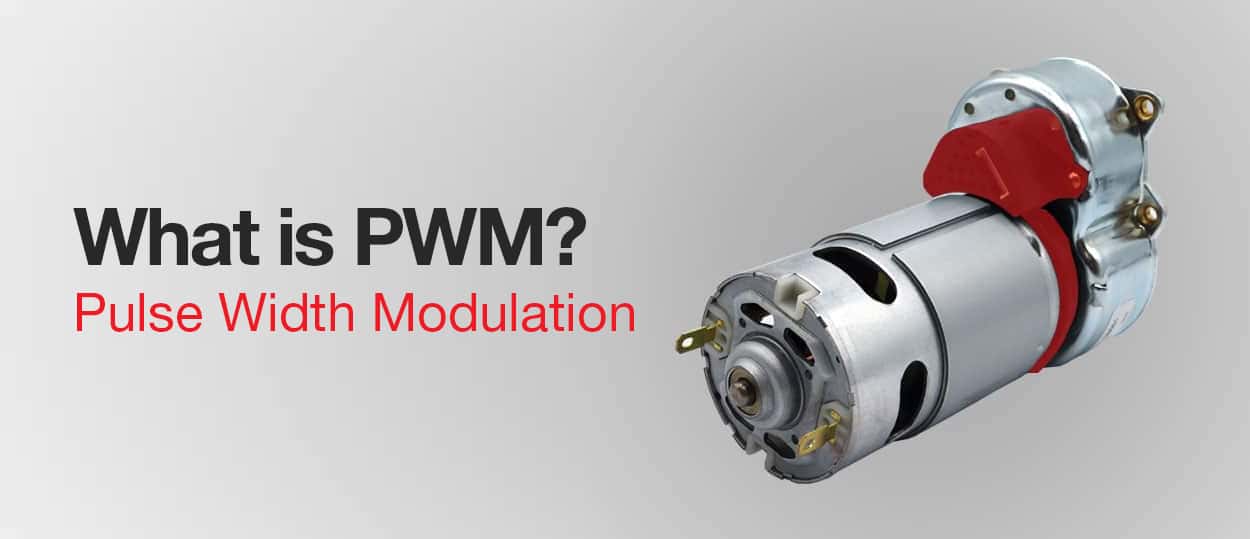Pulse Width Modulation (PWM) is a method of reducing the average power delivered by an electrical signal by effectively breaking up the pulse into discrete parts. The main components of PWM are:
Duty Cycle: The percentage that a signal is active across a set period of time. A 50% duty cycle is on an active signal for half the time and off for the other half.
Frequency: The rate at which the PWM signal repeats itself.

How does PWM work?
By varying the width of the pulses to control the amount of power supplied to a device. As an example of this, for a PWM with a frequency of 1kHz and a 50% duty cycle, the signal will be active for 0.5 milliseconds and inactive for 0.5 milliseconds for each cycle. Changing the duty cycle allows you to control the power that is delivered.

What are the applications?
Found in many everyday items that you wouldn't even think about. Here are just a few applications:
Motor Control: PWM can be used to control the speed of a DC motor by varying the duty cycle.
LED Dimming: PWM is used to control the brightness of LED lights, simply by adjusting the duty cycle you can change the average current going through the LEDs.
Power Delivery: In power supplies, you will find a PWM is used to regulate the voltage and current outputs.

Can PWMs be controlled by Absolute Encoders or Incremental Encoders?
Yes, Pulse Width Modulation signals can be controlled using feedback from Absolute Encoders and Incremental Encoders.
Absolute Encoders
An Absolute Encoder provides a unique digital code that is used for each position of the encoder shaft, allowing for precise positioning readouts. Here's how an Absolute Encoders being used for PWM works:
- Position Data
- Direct Position Control
- Error Correction
- Improved Precision
Incremental Encoders
An Incremental Encoder provides a service of pulses when the encoder shaft rotates, enabling you to know when the position changes relative to the starting point. This system is most commonly used for speed and position feedback in a closed-loop system. Here's how Incremental Encoders work with PWM:
- Pulse Generation
- Speed Control
- Position Feedback
- Closed-loop Control
By integrating either type of encoder, you will be able to achieve precise control of PWM signals. All coming together to provide better performance and reliability of your motor control system.











